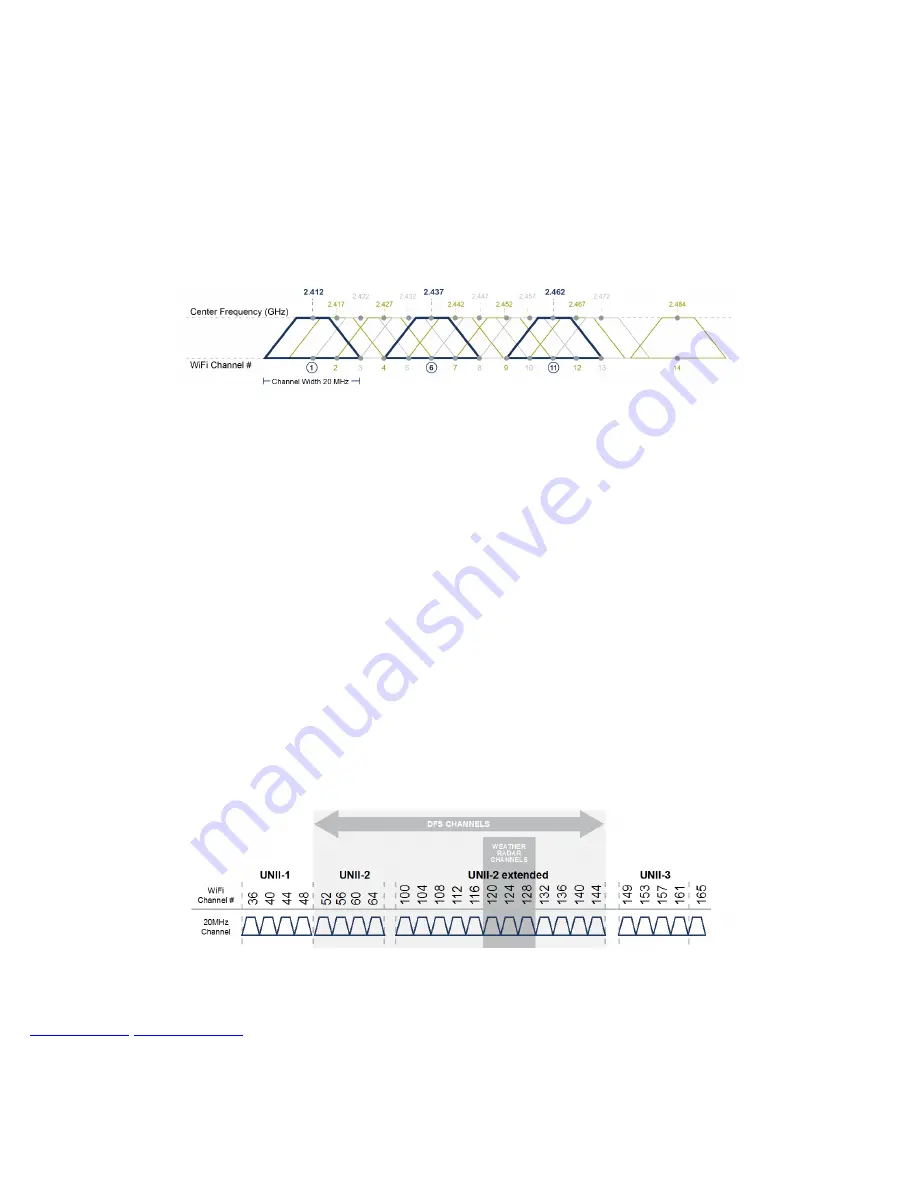
Appendix A: 2.4 GHz and 5 GHz Technology Overview
2.4 Frequency Band
The 2.4 GHz frequency band contains channels 1 to 13. Channel 1 starts at frequency 2.402 GHz and stops at frequency 2.422
GHz. The center frequency is 2.412 GHz.
Channels in the 2.4 GHz frequency band are 5 MHz apart and 20 MHz wide.
2.4 GHz Frequency Band
Access Points located on channels 1, 6, or 11 are the only non-overlapping channels on the 2.4 GHz frequency band.
IEEE 802.11n standard allows 40 MHz wide channels. An access point using 40 MHz wide channel uses 2 bonded channels
(e.g. channels 6+10).
5 GHz Frequency Band
The 5 GHz frequency band contains channels 36 to 165.
The channels’ center frequencies range from 5.180 GHz to 5.825 GHz. The channels are 20 MHz wide and there is no overlap
between adjacent channels, which means less possible interference from neighboring Access Points. Channel 36 is the first
channel in the spectrum, ranging from 5.170 to 5.190 GHz, and centered at 5.180 GHz.
The 5 GHz band is further sub-divided into four ranges: UNII-1, UNII-2, UNII-2 extended, and UNII-3 bands. Most Wi-Fi devices
support UNII-1 (channels 36 to 48) and UNII-3 (channels 149 to 165) only for indoor use. The FCC and other regulatory bodies
allow the use of the UNII-2 and 2e bands for indoor and outdoor use, provided that the device’s radio can support Dynamic
Frequency Selection (DFS) and Transmitter Power Control (TPC). DFS and TPC are designed to detect and adjust Wi-Fi
channels automatically if military or weather radar systems are present in order to avoid interfering with these systems.
Channels in the 5 GHz Frequency Band
IEEE 802.11n standard allows channels 40 MHz wide, while 802.11ac standard allows channels 40 MHz, 80 MHz, or 160 MHz
wide. An access point using an 80 MHz wide channel uses 4 bonded channels (e.g. channels 36+40+44+48).
WiFiAirExpertSeries_eManual_D07-00-120P_Rev A00








































